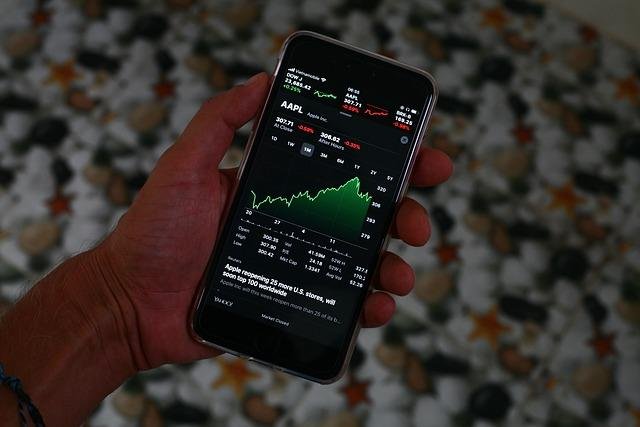The 4 Phases of a Crypto Market Cycle
https://pixabay.com/images/id-641907/
Trading requires a certain depth of information to maximize profitability. Like other financial markets, the crypto market has different phases where traders come in and exit the market. If you're looking to trade cryptocurrency, knowing the four phases of the crypto market will help you make better decisions to manage your trading portfolio correctly. This article explores the history of the phases of a crypto cycle, the phases and features, and how traders can act in each phase to maximize their trading performance.
History of The Four Phases
Richard Wyckoff, the legendary technical analyst, is credited with pioneering a trading method that explores the driving force for market prices. He created the Wyckoff Method, and his observations on price action led to the theory of market cycles and the phases involved. Wyckoff also discovered four rules that align with the four phases of a market cycle.
Many decades later, the Wyckoff cycle is used effectively in cryptocurrency trading for analyzing the market cycle and phases.
Here are the four phases of a crypto cycle:
Accumulation Phase
The accumulation phase, also called consolidation, is the first phase of a crypto market cycle and is marked by the exit of sellers (market bears) and price stabilization. The apparent effects are low trading volume due to traders' indecision and a ranging market with no clear direction. The accumulation phase is characterized by investors' sentiments moving from negative to neutral; more crypto holders sell off their assets to mitigate loss, while new entrants buy from them at discounts. Fear, doubt, and indecision are the hallmarks of the accumulation phase.
The accumulation phase is fuelled by reports and news about the market that sees prices pushing lower. The term accumulation comes from bullish traders buying as much crypto as possible in readiness for a bullish market run. They enter a pole position to make profits if prices increase even slightly.
What to do in the Accumulation phase
It is best to refrain from trading ranging markets, especially if your trading knowledge is limited. With no clear trend, ranging markets in the accumulation phase may take out unskilled traders. You can trade if you have the skill, but ensure to use all measures to protect your funds. If you are a crypto holder, the accumulation phase allows you to stack up cryptocurrencies and wait for a bull run. Do your research to know the best time to buy in, and diversify your investments.
Markup Phase
The markup phase, called the bull run, is the second phase of a crypto market cycle. The markup phase sees a rapid price increase alongside increased trading volume and market activity. These happen due to the influx of buyers and sellers, with buyers having the upper hand as they push prices higher. Although trading volume and market activity increase, traders remain wary of price dumps and trade accordingly.
Fundamental news may result in little drawbacks or corrections, which are mini-accumulation phases, but the increased trading volume eventually increases the price of assets. There may also be steeper corrections which lead to higher prices as the asset bounces higher. The markup phase continues until the sellers catch up with buyers and eventually surpass them, forming a resistance level.
The market eventually evens out and later sways to the sellers' side.

https://pixabay.com/images/id-5183938/
What to do in the Markup phase
Find a profitable position to start trading the market. It is best to wait for little corrections before buying or for the price to reach a new resistance level before selling. Keep abreast of crypto prices and the fundamental news that impacts the market and the trading volume to identify changes.
Distribution Phase
The distribution phase immediately follows the peak of the markup phase when drawbacks no longer produce higher prices. In this phase, some crypto traders move to sell their assets to accumulate profits, knowing that the price will even out. Thus, the accumulation and distribution phases share similar patterns, except that the latter leads to a price decrease and then evening out of the demand and supply.
Traders in the distribution phase are characterized by panic, but a smaller percentage of traders may hold their assets to ride out the bearish market. Although drawbacks typically lead to no new price levels, fundamental news may temporarily result in some price increase which is later corrected. The trading volume remains high, but the price moves in a narrow range, showing traders' differing sentiments.
The market sentiments move from confidence to greed or uncertainty.
What to do in the Distribution phase
You either take profits on your assets or ride out the distribution phase. It is best to secure your profits first and only leave some assets, depending on the market situation. Then, keep tabs on the trading volume and direction so you can accumulate or sell off your remaining assets.
Markdown Phase
The markdown phase marks the end of the cycle and the start of a bear run. The Markdown phase is characterized by fear, uncertainty, and dominance from bearish traders. Traders often short the market, selling assets off and taking profits on short trades. Bear traders may also sell off assets and re-buy at lower prices, making some profits.
Fundamental news has a bullish impact on a profoundly bearish market, as the effects may not be enough to spark a price increase.
What to do in the Markdown phase
You can sell assets to make profits or hold your crypto assets to ride out the bearish run. Bearish runs may last for months, so you should be prepared for lower prices. Keep abreast of the fear and greed index to monitor market sentiments.
Understand that the crypto market cycle goes through each phase, and cycles constantly repeat. There may be a more extended period between bearish and bullish markets, but the cycle continues.